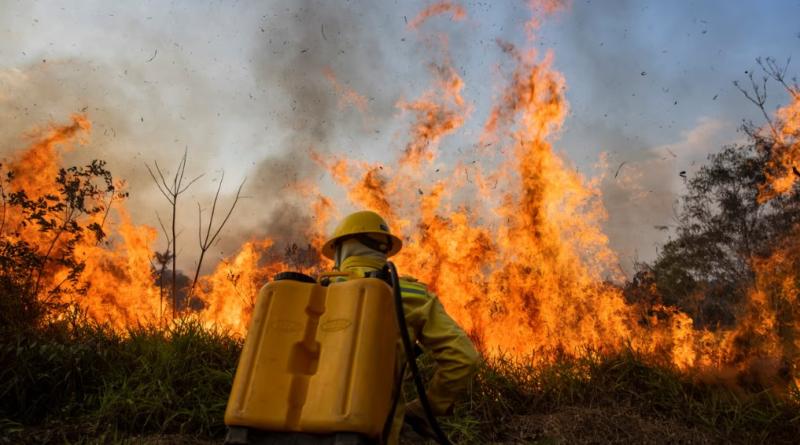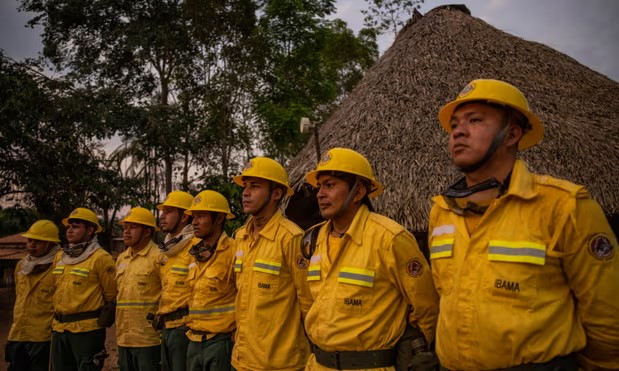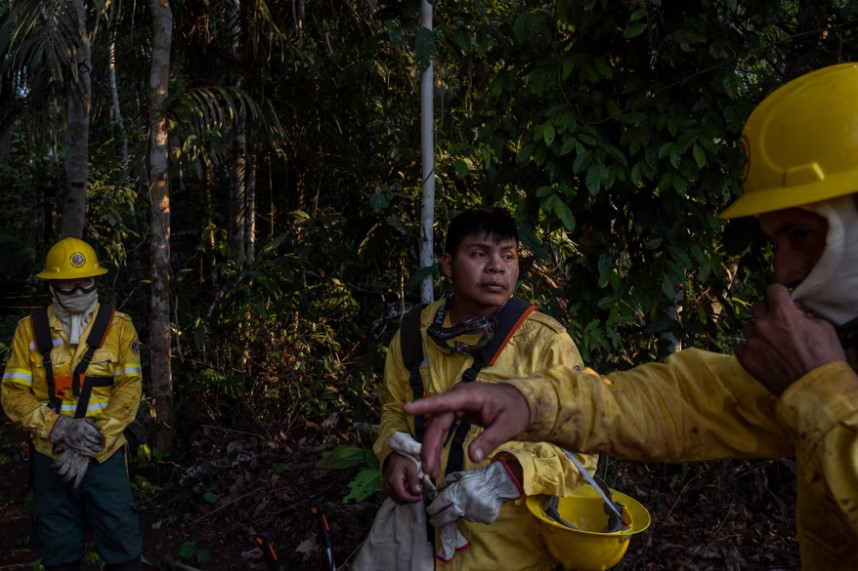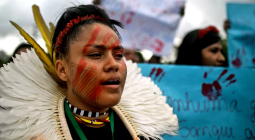In the line of fire: Indigenous brigades battling forest blazes in the Amazon

Preserving the world’s largest tropical forest poses an immense challenge for the governments of Latin America. This task is exacerbated by the inefficiency of public policies and the escalating land conflicts that plague various Brazilian biomes.
In response to these threats, Indigenous peoples have taken matters into their own hands, rallying to oversee and protect their territories.
Independent self-defence groups are cropping up in Amazonian communities across the region, taking on the role of preserving vast areas that should be under the state’s protection.

These Indigenous communities feel they are ultimately responsible for safeguarding the forest.
In collaboration with a federal agency, the Brazilian Institute of the Environment and Renewable Natural Resources (Ibama), the Paiter Suruí community in Rondônia state established the country’s third Indigenous brigade to tackle blazes during the fire season, which typically lasts from July to November.
Rondônia state once had 208,000 sq km of forest (51.4m acres), an area nearly the size of Romania, but over the past three decades has lost an estimated 68,000 sq km of rainforest.
Scientists predict that this year’s season of forest fires – and arson – will be even more intense due to the El Niño weather cycle, the sporadic climate pattern that increases global temperatures every three to seven years. So far, the number of hotspots in 2023 has already exceeded that of last year.
The brigade has attracted dozens of Paiter Suruí committed to preventing blazes and firefighting within the Sete de Setembro Indigenous territory, located around Cacoal.
As part of the selection process, candidates undergo assessments of their physical fitness and skills during the initial training. A week later, they take part in an intensive week of practical and theoretical brigade instruction.
The training covers safety protocols, fire management strategies, training in how to use equipment and tools, understanding how blazes can develop, and specific techniques for combating forest fires.
Indigenous communities are increasingly using technology in their efforts to protect their ancestral lands in the Amazon. The integration of satellite images on the internet is poised to revolutionise the brigade’s work, giving a huge boost to the Paiter Suruí people in their fight against forest fires.
I am in close contact with the Lakapoy Collective, a group of Indigenous photographers who include Ubiratan Suruí, the young activist Txai Suruí, and Gabriel Uchida, representatives of the Paiter Suruí people.
After securing legal recognition of their Indigenous territory, these dynamic people have undergone comprehensive training in using technology to document their cultural narratives. Their mission is clear: to strengthen the Paiter Suruí heritage.

Paiter Suruí long ago embarked on sustainable development through tourism in their village, where they produce coffee and chestnuts (what are known as Brazil nuts in the west). They are now directly involved in reforestation initiatives, monitoring the biome, and surveillance of their territory, as well as organising the fire brigade. This collective effort underscores their dedication to fostering sustainable practices.
“We previously operated an informal Indigenous brigade. Now we have trained our members, equipping them to protect our territory, especially during wildfire seasons,” says Ubiratan Suruí.
“Their primary responsibilities include combating fires along our territorial boundaries and managing controlled burns in the traditional fields of our Indigenous communities.”
In the past few decades, the degradation of Brazil’s ecosystems has been steadily worsening. The problem escalated during the tenure of two former presidents, the conservative Michel Temer and the far-right Jair Bolsonaro.
A study in the journal Nature led by Luciana Gatti, a senior researcher at the Brazilian Institute for Space Research (Inpe), highlights the devastating consequences of the “relaxation” of environmental regulations under the far-right administration of the former president Jair Bolsonaro, showing how the south-east Amazon, in particular, has become a net source of carbon to the atmosphere.
A Guardian investigation found that fires were three times more common in beef-farming areas of the Amazon.
Environmental experts and a few political leaders acknowledge the imperative to create job opportunities and increase income levels in the Amazon region, home to more than 28 million Brazilians.
Involving local communities in preservation is a crucial strategy to reduce the economic allure of deforestation, cattle ranching and other large-scale agriculture, which often lead to environmental degradation under the banner of economic development and wealth accumulation.
The Paiter Suruí and other Indigenous firefighting brigades are just one way in which these communities are taking steps to secure their future.
Photograph: Victor Moriyama - A Paiter Suruí firefighter tackles a wall of flame in the Amazon. The volunteers get a week’s training before they fight fires with the most basic of equipment. However, satellite images are increasingly being used by Indigenous communities to spot wildfires early.




